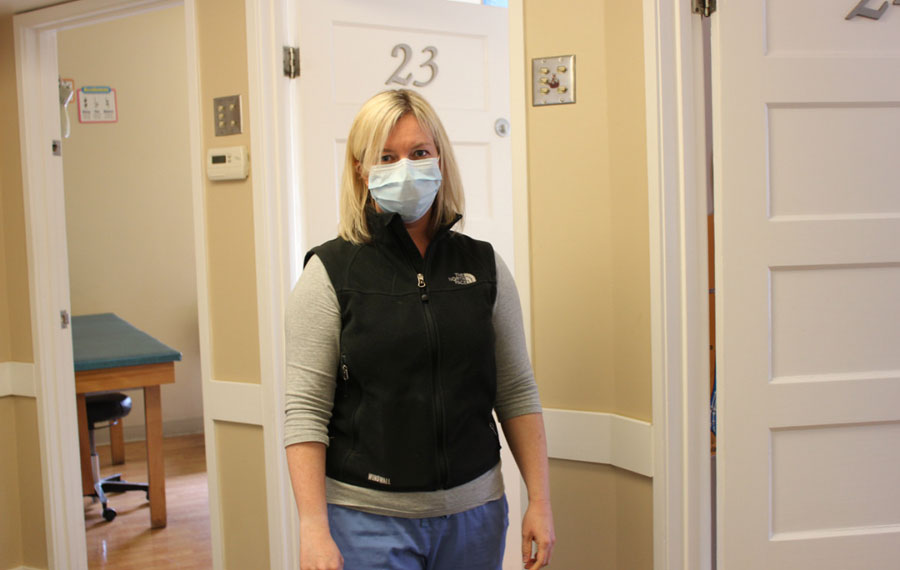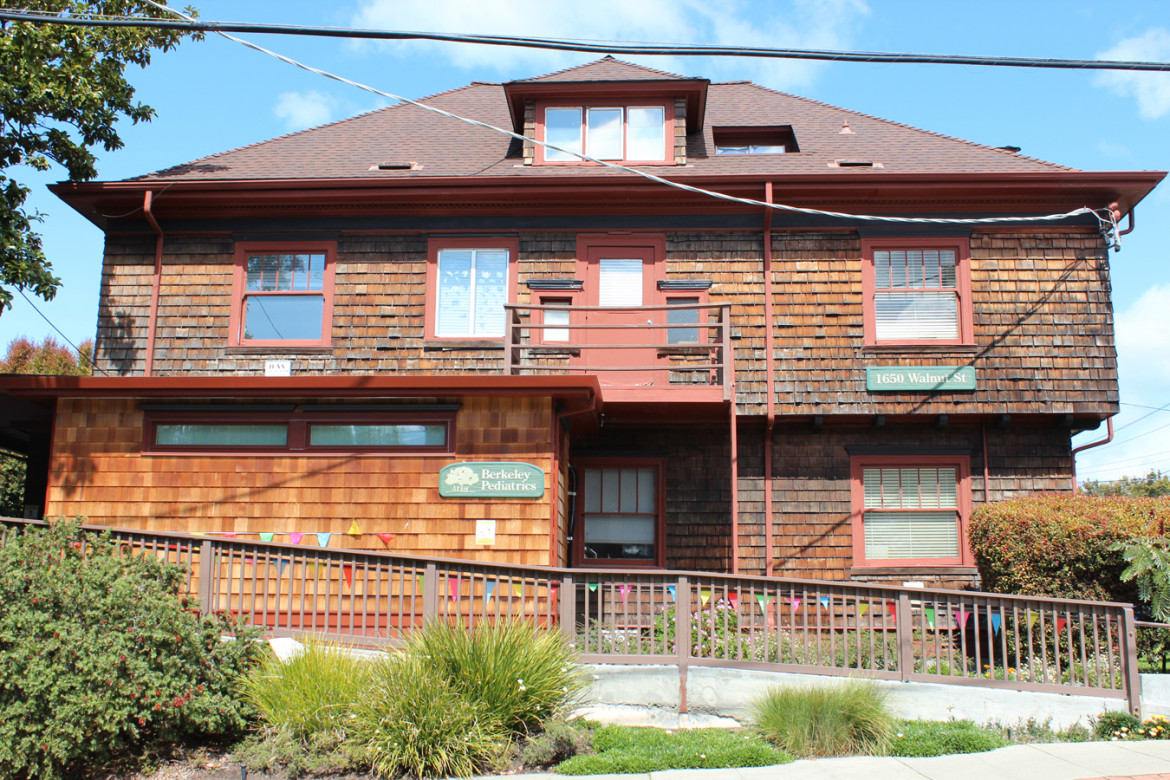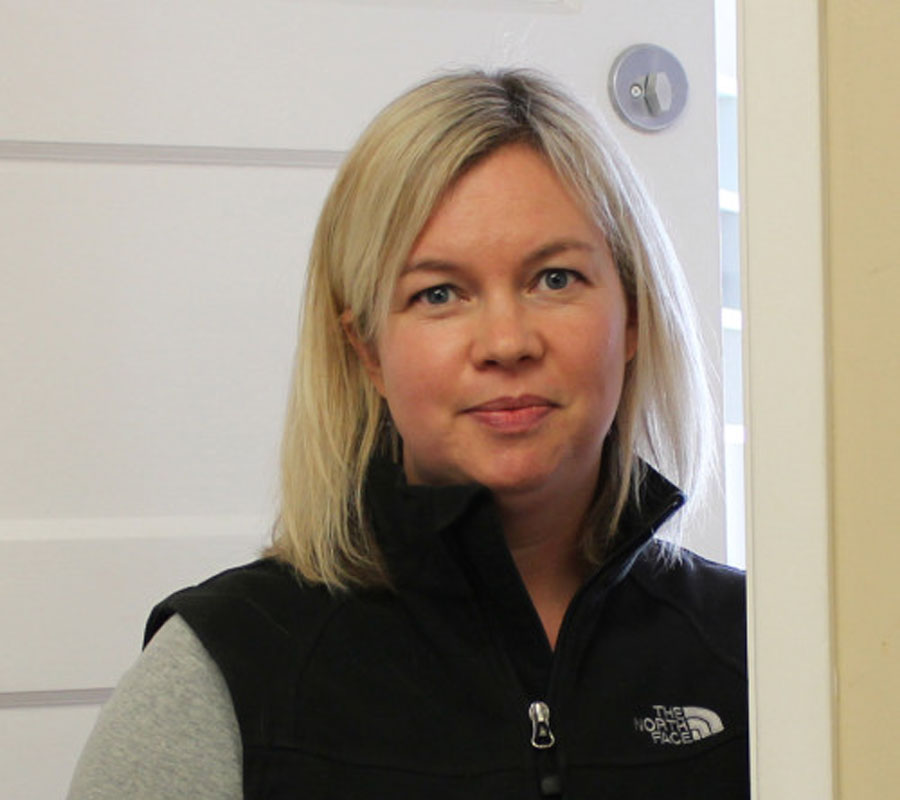
BERKELEY, CA -The silence was striking. On a normal day, the well-child waiting room at Berkeley Pediatrics bustles with children playing, infants crying and teenagers furiously tapping on their smartphones.
On a recent Monday, the room was deserted, save for a bubbling tropical fish tank and a few empty chairs. Every book, puzzle and wooden block had been confiscated to prevent the spread of the coronavirus. There was not a young patient to be seen.
Since March 17, when San Francisco Bay Area officials issued the nation’s first sweeping orders for residents to shelter in place, patient volume at the 78-year-old practice has dropped by nearly 60%. In accordance with guidance from the American Academy of Pediatrics, its seven doctors have canceled well-child visits for almost all children older than 18 months. And some parents balk at bringing in even babies for vaccines, opening the door to another potential crisis down the road.
In the days after the COVID-19 clampdown, the office scrambled to set up telehealth for sick visits. Still, this small, independent practice has gone from seeing more than 100 patients a day to about 40. It has laid off six staff members, and the physicians have taken a 40% pay cut.
“I’ve been practicing for a long time, and I’ve seen a lot of things. This is a very different beast,” said Dr. Annemary Franks, who joined the practice in 1993. “I’ve never seen in a week the entire thing fall apart.”

Across the U.S., thousands of pediatric practices that provide front-line care for the nation’s children are struggling to adjust to a dire new reality: crashing revenue, terrified parents and a shortage of protective equipment, from gloves and goggles to thermometer covers. And all while they are being asked to care for young patients who could well be infected with COVID-19 — and prime vectors for transmission — without showing symptoms.
How well these practices adapt will be key as the nation looks to weather the pandemic: Pediatric offices provide a crucial release valve for the health care system by treating the broken bones, lacerations, colds, flus and chronic illnesses that might otherwise flood overburdened emergency departments.
“If it’s a month or two of care this way, OK. But if this is months and months and months, we’re going to see more practices go under,” said Franks. “We don’t have some pot of money that we have sitting around to get us through this. (publishedreporter.com) We’re fee-for-service. You get paid for what you do.”
Like many practices, Berkeley Pediatrics improvised overnight in the face of COVID-19. The brown-shingled Craftsman that houses the practice was quickly divided into two halves: upstairs for well patients, downstairs for those who are sick. They opened a back entrance up an unused set of stairs so well patients could bypass the sick.
Before they get an appointment, all children are screened by phone for signs of the virus. When possible, sick children are treated via a video visit. If a child with respiratory symptoms needs to be seen in person, a doctor meets the child in the family’s car in the parking lot, dressed in gown, gloves and face shield. Everyone who enters the office — whether child or caregiver — is checked for fever. The practice has only 75 plastic thermometer covers left, and supplies are on backorder. The doctors wear surgical masks even for well-child visits.
“Every day I think to myself, ‘That’s exactly the opposite of what I was taught in medical school and what I was trained to do,’” said Dr. Olivia Lang, another physician at Berkeley Pediatrics. “I’m not supposed to wear masks and scare my patients, but I’m doing it every day.”

Telehealth makes eye contact challenging, she said. And in an effort to avoid in-person appointments, health care providers have resorted to prescribing antibiotics over the phone for symptoms suggesting ear infections and strep throat, without doing lab work. “We’re supposed to be good stewards of antibiotics, and that’s being dismantled,” Lang said.
Another challenge is the availability of personal protective equipment, a struggle for all health care workers. Pediatric practices do not routinely keep stocks of the heavy-duty N95 masks, and they seldom use gowns or even simple surgical masks. Now, with hospitals facing critical shortages of PPE, pediatricians are often low on the list to get supplies.
Dr. Kristen Haddon, a pediatrician outside Boston, said the practice didn’t jump to purchase supplies when cases of the novel coronavirus first emerged in Washington state in January. “It felt very far away and seemed very isolated,” she said. By the time they realized the virus was widespread, “there was nothing to be had.” They had no N95s, gowns or goggles, and only two boxes of surgical masks.
Pediatricians are considered at particular risk of infection, given preliminary research that suggests children infected with COVID-19 are more likely than adults to have mild cases and may be contagious while showing no symptoms at all. “We have absolutely no idea who is infected and who isn’t,” said Haddon. “Kids cough and sneeze in our face all the time. And one cough could be really bad for me.”

Dr. Niki Saxena, a pediatrician in Redwood City, California, said her practice is carefully guarding the handful of N95s they have left from the SARS epidemic and have had to make “some very scary decisions” about how to protect staff. Their options, she said, are to shut down the office — in which case they would go out of business — or to be very precise about when they use protective equipment.
“When you’re in battle, you have to keep your powder dry until you have to use it,” she said. “When I see someone walking through the grocery store with an N95, it takes all my willpower not to rip it off their face.”
At Berkeley Pediatrics, staff members are wiping down gowns after seeing a patient and simply reusing them. When she gets home, said Dr. Katrina Michel, she stops in the garage, strips off her clothing and leaves it on the floor. She tells her two young children not to touch her until she’s had a chance to shower. “I’ve never been afraid to go to work for my personal safety before,” she said.
She worries, too, for the well-being of her patients, as the efforts to contain the novel coronavirus increasingly interrupt basic care. Across the country, pediatricians report that some parents are canceling routine checkups and vaccination appointments — including first-time vaccinations for infants — because they worry about getting infected at the office.

“We don’t want to create a pertussis outbreak because we didn’t vaccinate all of our babies on time,” said Michel.
Many practices are delaying booster shots for older kids. Dr. Tina Carrol-Scott, a Miami pediatrician, said she’s concerned that the mixed messaging could backfire with parents who are vaccine-hesitant. “If we start taking the stance that because of coronavirus it’s OK for you to be delayed a month or two, it kind of takes away our credibility as physicians,” she said. “Parents are going to say, ‘Well, it was OK to delay during coronavirus, why not now?’”
And it’s not just missed vaccinations that are a concern. Pediatricians are tracking growth and development at well-child visits. For newborns, that includes checks for weight loss, jaundice and congenital diseases.
“We’ve had parents of infants who are 1 week old say, ‘Oh I don’t want to come in; I don’t think it’s safe,’” said Dr. Scott Needle, a pediatrician in Sacramento, California. “We’ve had to tell them, ‘Look, for a 1-week-old baby just out of the hospital, there are a lot of things you need to check that could be much more dangerous than coronavirus at this point.’”
Saxena said the caseload at her Redwood City practice is less than 25% of what’s typical, and warned of even broader ramifications on child health care as the pandemic wears on.
“If people stop going to the doctor altogether,” she said, “then primary care practices will shutter just like movie theaters and restaurants.”



Comments are closed.